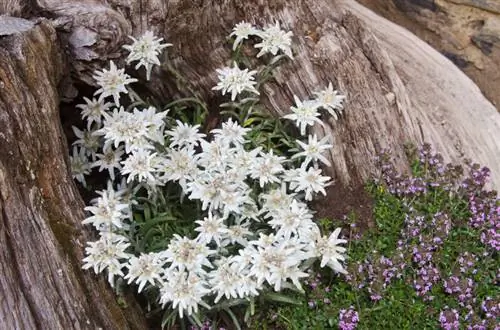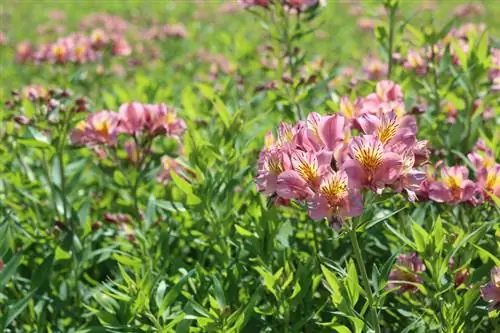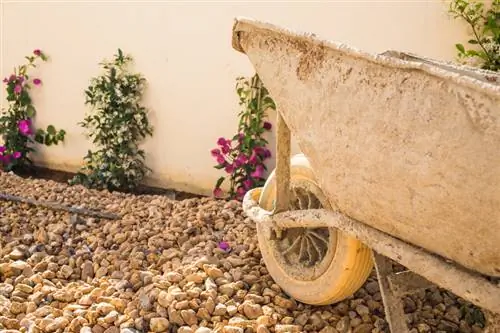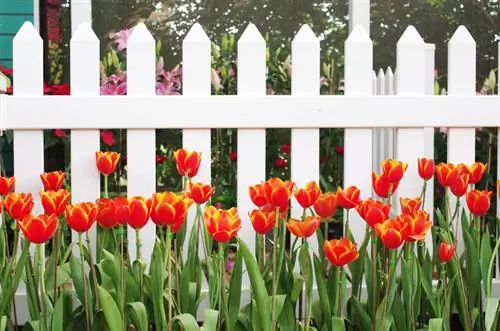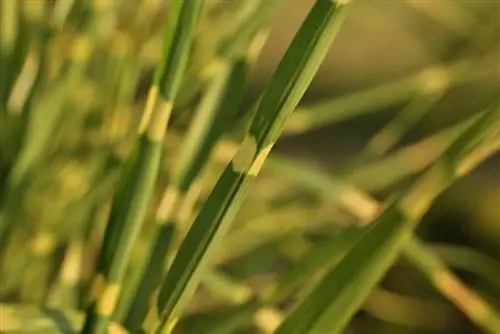- Author admin [email protected].
- Public 2023-12-16 16:46.
- Last modified 2025-06-01 06:02.
The edelweiss (Leontopodium alpinum) is the most famous symbol of the Alps. The bright white blooming flower represents bravery, courage and love. Outside the Alps, the Alpine edelweiss rarely blooms white, but rather takes on a more grayish color. Ornamental varieties from the Himalayas, on the other hand, impress with their pure white flowers. The edelweiss feels particularly at home in a rock garden.
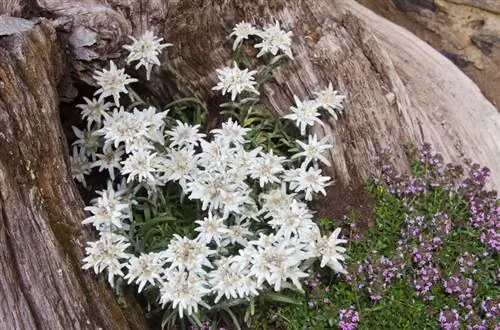
How do I plant and care for edelweiss in the garden?
To plant edelweiss in the garden, choose a sunny, shadeless location with poor, calcareous and well-drained soil. Plant them preferably in a rock garden with a southern or western exposure. Easy to care for, the edelweiss should neither be watered nor fertilized.
Planting edelweiss in the garden
If you want to plant edelweiss in your garden, it is best to plant the perennial, which is up to 20 centimeters high, in a location that is as sunny and shadeless as possible with barren, calcareous and permeable soil. It is best to place the edelweiss on a slope to ensure good water drainage. In its natural habitat, the flower receives a lot of moisture from melting snow, although the water drains away quickly and the soil does not become saturated. Like all high mountain plants, the edelweiss reacts negatively to poor water drainage.
The perfect location for a rock garden
The edelweiss feels particularly comfortable in a rock garden that faces south or west - this guarantees as much solar radiation as possible. It should not be located near trees that can cast unwanted shadows and damage plants with water droplets and falling leaves.
Caring for edelweiss in the garden
The undemanding edelweiss should neither be watered nor fertilized, nor should compost be mixed in - neither when planting nor at the start of the season. Immediately after flowering, cut the shoots just a hand's breadth above the ground; the plant will retreat in winter anyway. Propagation occurs via division, which is ideally carried out in autumn after flowering and pruning. Winter protection is usually only necessary in the event of clear frosts - i.e. H. low temperatures without snow cover - necessary.
Be careful of snails
Unfortunately, not only we humans, but also the gardener's worst enemy - the voracious slugs - really like the alpine plant. So if you don't want the animals to eat away the edelweiss you've just planted, you should take appropriate precautions. Since edelweiss is very sensitive to moisture, mulching is not possible - it would also look quite unsightly in the rock garden. A possible - and effective - measure is a snail fence (€89.00 on Amazon).
Tips & Tricks
Edelweiss can be socialized very well with saxifrage (Saxifraga), sedum (Sedum) and speedwell (Veronica prostrata). However, the edelweiss does not get along well with the second famous alpine plant, the alpine rose - as a type of rhododendron, the alpine rose thrives in acidic ericaceous soil.

